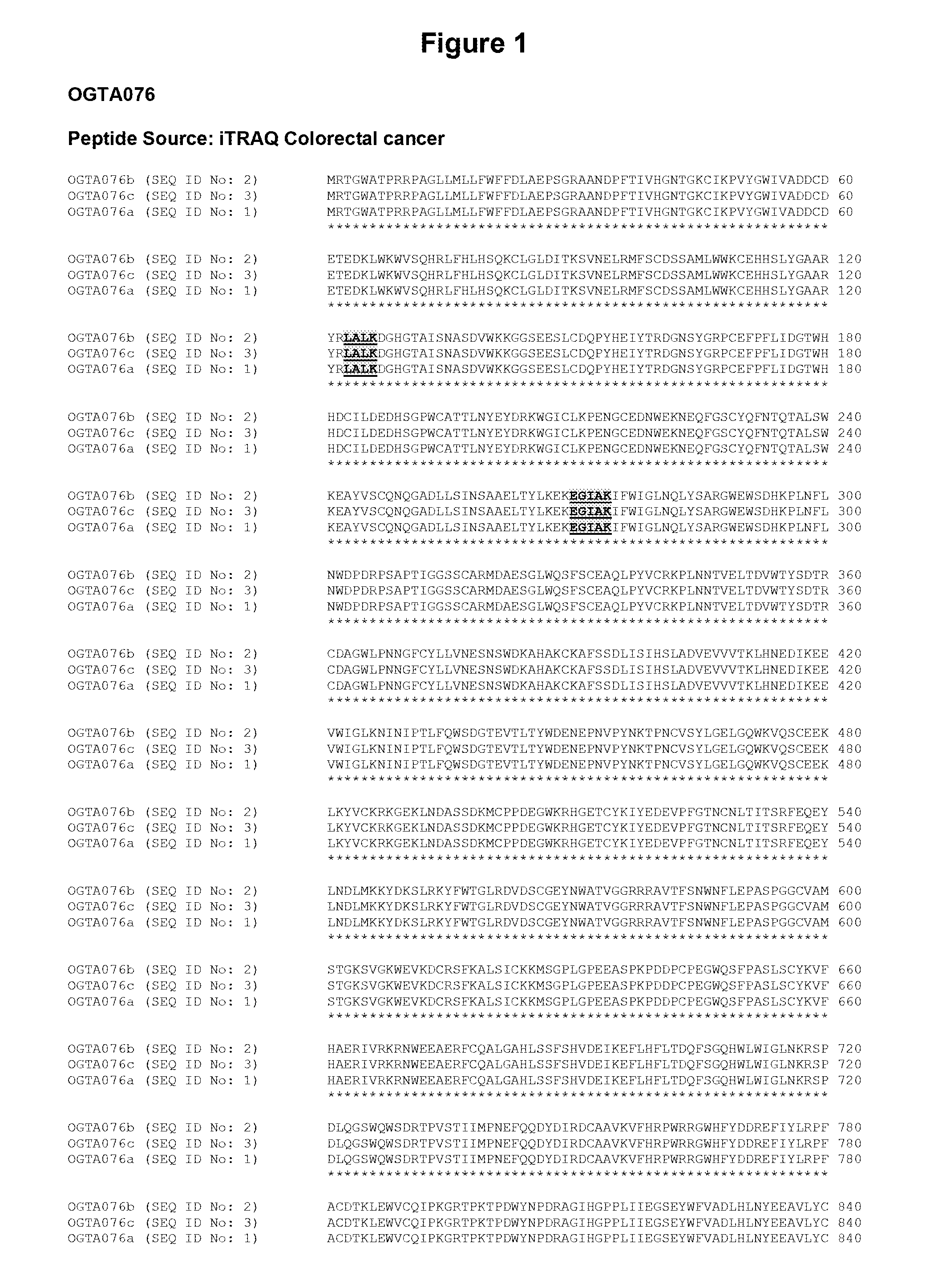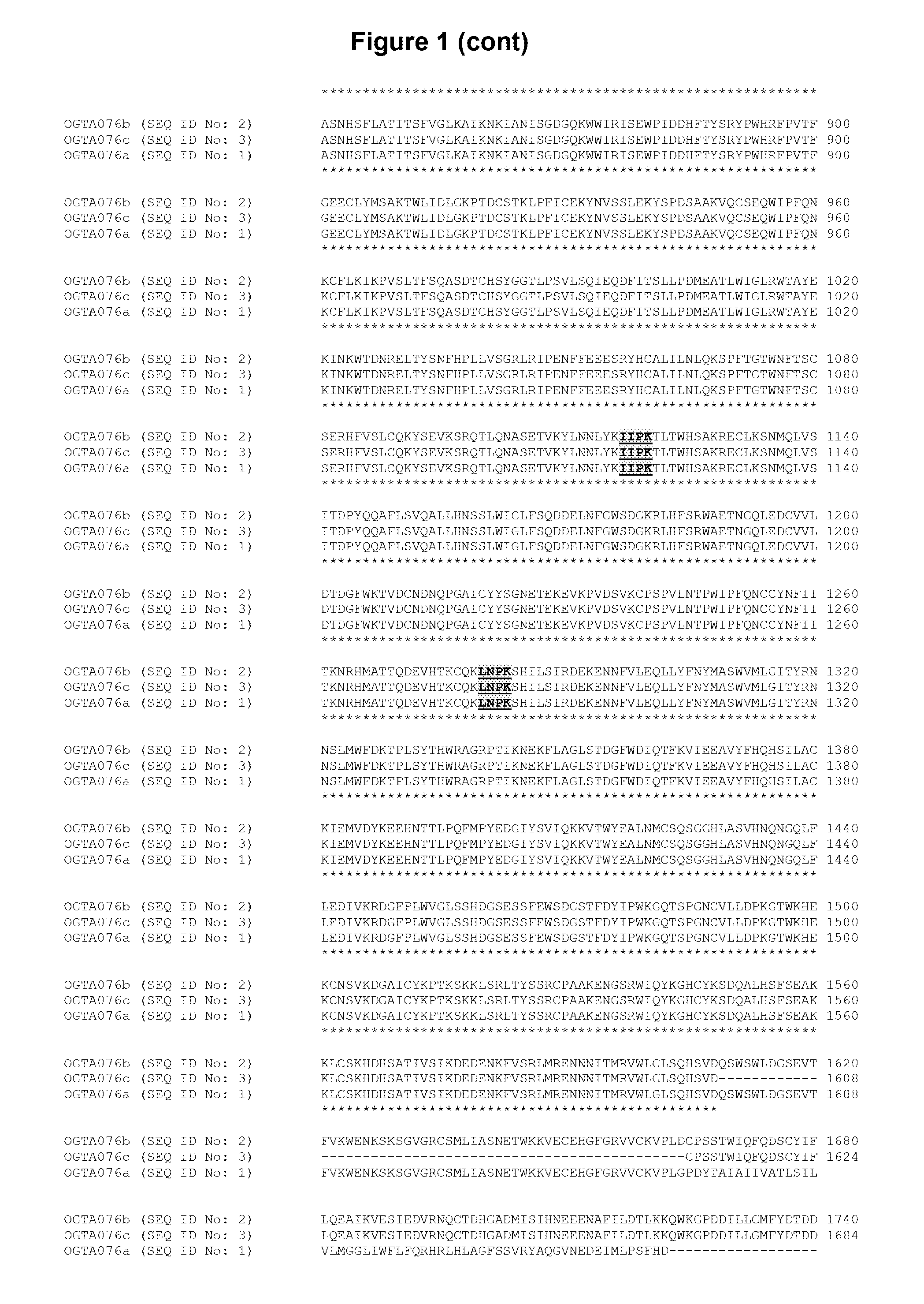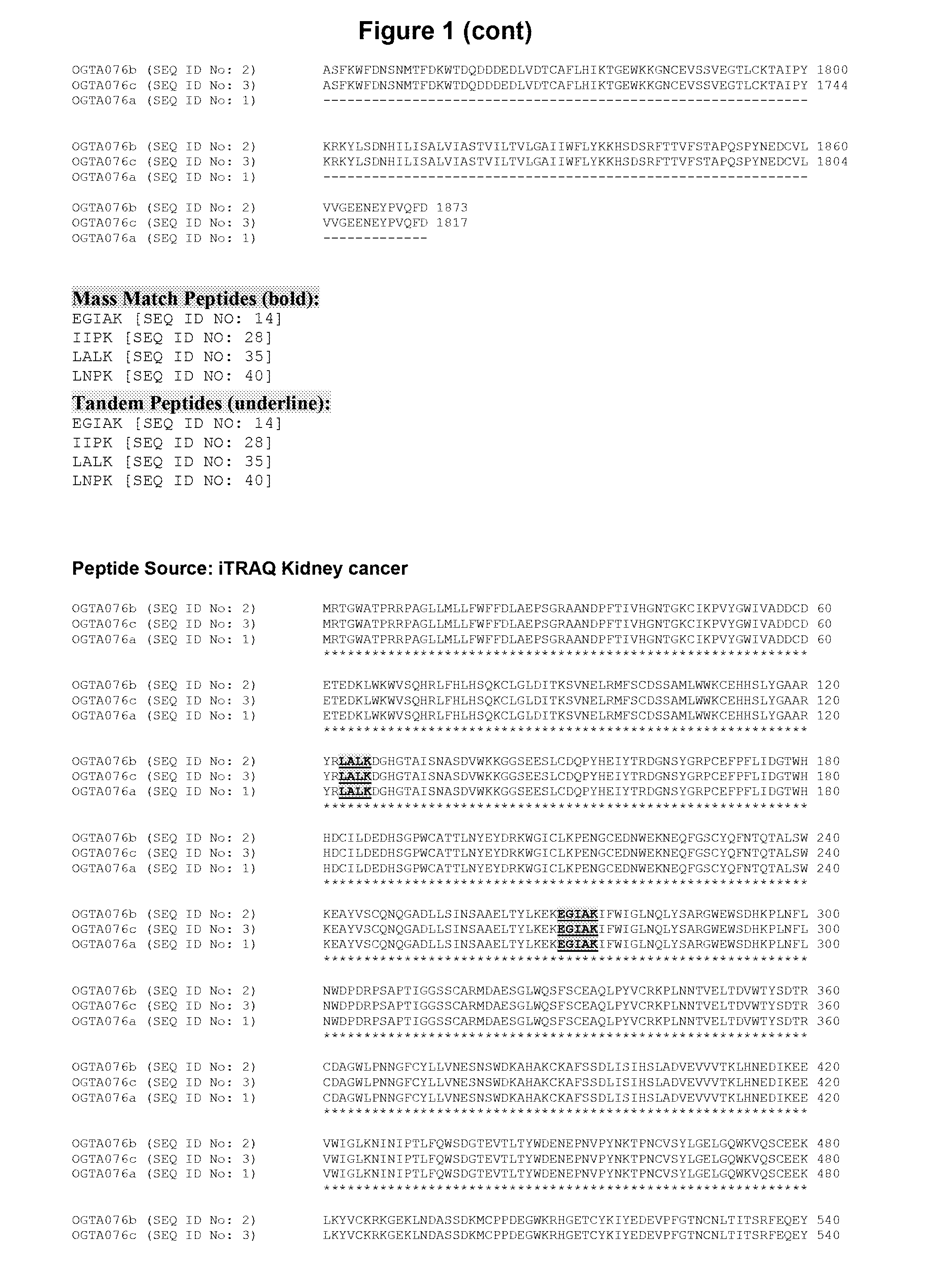Protein
a technology of protein and peptide, applied in the field of proteins, can solve the problems of general fatality, no specific treatment has been shown to improve survival, damage to nearby organs, and deep vein thrombosis
- Summary
- Abstract
- Description
- Claims
- Application Information
AI Technical Summary
Benefits of technology
Problems solved by technology
Method used
Image
Examples
example 1
Identification of Membrane Proteins Expressed in Colorectal Cancer, Chronic Lymphocytic Leukaemia and Pancreatic Cancer Blood and Tissue Samples Using 1D Gel Electrophoresis
[0317]Using the following Reference Protocol, membrane proteins extracted from colorectal cancer, chronic lymphocytic leukaemia and pancreatic cancer tissue samples were separated by 1D gel and analysed.
1.1 Materials and Methods
1.1.1—Plasma Membrane Fractionation
[0318]The cells recovered from the epithelium of a colorectal cancer, chronic lymphocytic leukaemia or pancreatic cancer were lysed and submitted to centrifugation at 1000 G. The supernatant was taken, and it was subsequently centrifuged at 3000 G. Once again, the supernatant was taken, and it was then centrifuged at 100 000 G.
[0319]The resulting pellet was recovered and put on 15-60% sucrose gradient.
[0320]A Western blot was used to identify sub cellular markers, and the Plasma Membrane fractions were pooled.
[0321]The pooled solution was either run direc...
example 2
Identification of Membrane Proteins Expressed in Colorectal Cancer, Kidney Cancer, Liver Cancer, Lung Cancer or Ovarian Cancer Blood and Tissue Samples
[0346]Using the following Reference Protocol, membrane proteins extracted from colorectal cancer, kidney cancer, liver cancer, lung cancer and ovarian cancer tissue and normal adjacent colorectal, kidney, liver, lung and ovarian tissue samples were digested, labelled with Isotope Tagging for Absolute & Relative Quantitation reagents (iTRAQ; Applied Biosystems, Foster City, Calif., USA) and resulting peptides sequenced by tandem mass spectrometry.
2.1 Materials and Methods
2.1.1—Plasma Membrane Fractionation
[0347]The cells recovered from a colorectal cancer, kidney cancer, liver cancer, lung cancer or ovarian cancer or normal adjacent colorectal, kidney, liver, lung or ovarian tissue were lysed and submitted to centrifugation at 1000 G. The supernatant was taken, and it was subsequently centrifuged at 3000 G. Once again, the supernatant ...
PUM
| Property | Measurement | Unit |
|---|---|---|
| molecular weight | aaaaa | aaaaa |
| body weight | aaaaa | aaaaa |
| molecular weight | aaaaa | aaaaa |
Abstract
Description
Claims
Application Information
 Login to View More
Login to View More - R&D
- Intellectual Property
- Life Sciences
- Materials
- Tech Scout
- Unparalleled Data Quality
- Higher Quality Content
- 60% Fewer Hallucinations
Browse by: Latest US Patents, China's latest patents, Technical Efficacy Thesaurus, Application Domain, Technology Topic, Popular Technical Reports.
© 2025 PatSnap. All rights reserved.Legal|Privacy policy|Modern Slavery Act Transparency Statement|Sitemap|About US| Contact US: help@patsnap.com



